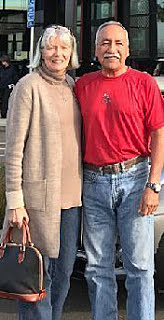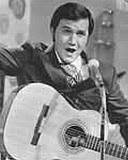Macaroni and cheese (also called mac and cheese in Canada and the United States and macaroni cheese in the United Kingdom) is a dish of cooked macaroni pasta and a cheese sauce, most commonly Cheddar sauce.
The traditional macaroni and cheese is a casserole baked in the oven; however, it may be prepared in a sauce pan on top of the stove or using a packaged mix. The cheese is often first incorporated into a Béchamel sauce to create a Mornay sauce, which is then added to the pasta. In the United States, it is considered a comfort food.
Cheese and pasta casseroles were recorded in the 14th century in the Italian cookbook, Liber de Coquina, which featured a dish of Parmesan cheese and pasta. A cheese and pasta casserole known as makerouns was recorded in the 14th-century medieval English cookbook, the Forme of Cury. It was made with fresh, hand-cut pasta which was sandwiched between a mixture of melted butter and cheese. The recipe given (in Middle English) was:
This is the above recipe in modern English:
The first modern recipe for macaroni and cheese was included in Elizabeth Raffald's 1769 book, The Experienced English Housekeeper. Raffald's recipe is for a Béchamel sauce with cheddar cheese—a Mornay sauce in French cooking—which is mixed with macaroni, sprinkled with Parmesan, and baked until bubbly and golden.
Another recipe from 1784 stated that the small tubes of macaroni must be boiled, then drained in a sifter before being moved to a frying pan. Heavy cream is then added to the macaroni along with a "knob of butter" rolled in flour, and it must be cooked for five minutes before being transferred to a dish and topped with toasted Parmesan and pepper. The famous British Victorian cookbook Mrs. Beeton's Book of Household Management included two instances of "Macaroni, as usually served with the Cheese Course". One of them states:
In the United Kingdom, during the 2010s, it has seen a surge in popularity, becoming widespread as a meal and as a side order in both fast food and upmarket restaurants.
The US president Thomas Jefferson and James Hemings, his slave, encountered macaroni in Paris and brought the recipe back to Monticello. Jefferson drew a sketch of the pasta and wrote detailed notes on the extrusion process. In 1793, he commissioned the US ambassador to France William Short to purchase a machine for making it. Evidently, the machine was not suitable, as Jefferson later imported both macaroni and Parmesan cheese for his use at Monticello. In 1802, Jefferson served "a pie called macaroni" at a state dinner. The menu of the dinner was reported by Reverend Manasseh Cutler, who apparently was not fond of the cheesy macaroni casserole. Nevertheless, since that time, baked macaroni and cheese has remained popular in the United States.
A recipe called "macaroni and cheese" appeared in the 1824 cookbook The Virginia House-Wife written by Mary Randolph. Randolph's recipe had three ingredients: macaroni, cheese, and butter, layered together and baked in a hot oven. The cookbook was the most influential cookbook of the 19th century, according to culinary historian Karen Hess. Similar recipes for macaroni and cheese occur in the 1852 Hand-book of Useful Arts, and the 1861 Godey's Lady's Book. By the mid-1880s, cookbooks as far west as Kansas and Festus, Missouri, included recipes for macaroni and cheese casseroles. Factory production of the main ingredients made the dish affordable, and recipes made it accessible, but not notably popular. As it became accessible to a broader section of society, macaroni and cheese lost its upper-class appeal.
Made with three types of cheese, these lasagna rolls ups with cheese are the easiest way to make lasagna for the whole family. While this recipe is technically vegetarian, you could serve it with some meatballs for extra protein!
- 1 (28-ounce) jar spaghetti sauce, divided
- 1 (2-pound) container ricotta cheese
- 2 cups mozzarella cheese, divided
- 1/3 cup grated Parmesan cheese
- 3 eggs
- 1 tablespoon chopped fresh parsley
- 1 teaspoon salt
- 12 to 14 lasagna noodles, prepared according to package directions
- Preheat oven to 375º. Pour half the spaghetti sauce over the bottom of a 9- x 13-inch baking dish.
- In a large bowl, combine ricotta cheese, 1 cup mozzarella cheese, the Parmesan cheese, eggs, parsley, and salt until well blended.
- Spoon cheese mixture over lasagna noodles, distributing evenly, and roll up tightly. Place rollups seam-side down in prepared baking dish; top with remaining sauce. Sprinkle with remaining mozzarella cheese.
- Bake 35 to 40 minutes, or until heated through.
And births this date include....
1909 –Barry Goldwater, American politician (d. 1998)
1936 – Roger Miller, American singer (d. 1992)
"Dang me, dang me.... they ought to take a rope and hang me. HIGHHHHH from the highest tree... Oh woman will you weep for me?"
"You can't roller skate in a buffalo herd..."
Great songs!!!
1947 – Jack Hanna, American zoologist
Originally, the smorgasbord table was a meal where guests gathered before dinner for a pre-dinner drink and was separate from the formal dinner that followed.
The term buffet originally referred to the French sideboard furniture where food was served from, however it eventually became applied to the serving format.











